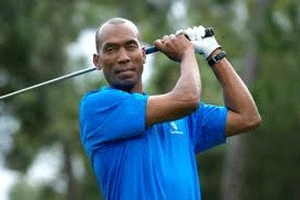
December 2, 2014 | By Farrell Evans
One of the most enduring images from Tiger Woods’s historic 1997 Masters win doesn’t involve golf shots or the green jacket. Before the traditional winner’s dinner that Sunday night, as Woods walked into the clubhouse, the all-Black waitstaff set down their dishes and napkins and applauded the first Black major winner. Because at Augusta National, as with most private clubs, African-Americans have typically been consigned to jobs as caddies, cooks, busboys and waiters.
Watching that year was Rodney Green, who had recently begun his career as a head golf professional. Green had always wanted an “out front” golf job, with the ability to hire, fire and represent the club. Today, 50 years after the end of the PGA’s Caucasians-only clause allowed Black men to play the Tour.
Green, the director of golf at Innisbrook Resort in Tampa, is one of only 85 African American PGA club professionalsa group that makes up less than one-half of 1 percent of the nation’s 28,000 pros. (There have been just two Black women to earn membershipRenee Powell and Maulana Dotch.) Add Hispanics and Asians (263 and 196 PGA members, respectively), and minorities make up less than 2 percent of all PGA pros.
This despite the fact that Blacks, Asians and Hispanics comprise 21 percent of golfers in America, according to the National Golf Foundation. As a point of comparison, about 24 percent of members of the United States Professional Tennis Associationthe oldest teaching organization in the tennis industry, dating to 1927are minorities.
PGA professionals are the game’s most visible ambassadors. They give the lessons and run the pro shops. Yet among their ranks, minorities are virtually invisible.
Read more at GOLF

